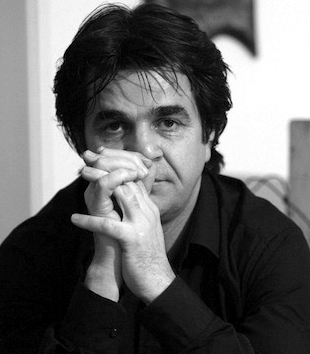|
|
| Welcome to Online Film Home! |
|---|
|
|
|
 |
Jafar Panahi:
A Complete Retrospective
7 October - 13 November 2016
Cinéma 1, Cinéma 2 - Centre Pompidou, Paris
Filmmaker Jafar Panahi has become an international symbol of resistance since his conviction and banning by the Iranian courts in 2010.
The creator of such hotly debated films as The Circle and Offside, most never shown in Iran, he has managed to get round the ban on his filming so as to be able to continue to work (Taxi).
As part of the Paris Autumn Festival, the Pompidou Centre is presenting a complete retrospective of his films, and showing his photographic work “Nuages” (Clouds) for the first time in France.
Organiser : DDC / Les cinémas, Sylvie Pras
Jean-Michel Frodon: What is your legal and professional position in Iran?
Jafar Panahi: In 2011, the appellate court upheld my sentence to six years imprisonment and a twenty-year ban on both making films and leaving the country. So I’ve had to find ways to start working again despite the ban. […] In 2008, Mahmoud Ahmadinejad was re-elected president, prompting enormous popular unrest […]. [Iranian filmmaker] Mohammad Rasoulof and I made a film about the events. One day the police turned up at my home and arrested me.
JMF - Despite the imprisonment and the threats, you’ve been working, making films, taking photographs…
JP - At first, I didn’t realise the impact of the sentence, what these bans would mean for me. Happily, digital cameras and the other possibilities offered by technology make it possible to film without asking for authorisation, discreetly and without great expense. I was able to start filming again.
JMF - As a student, you made shorts?
JP - I wanted to prove to myself that I was capable of making films […].The first, Wounded Heads, is a documentary: I wanted a record of a ritual that in those days I thought was soon fated to disappear. The experience of making a documentary taught me not to judge what I film, the people I film.
JMF - Your first full-length film, The White Balloon won the Caméra d’Or for best first film at Cannes in 1995.
JP - Yes. It was a great success, both in Iran and abroad. Since then I’ve been producer or co-producer on all my films, in control of the money. That’s what allowed me to make The Circle: without being the main funder, there would have been no way of making a film like that in Iran. [This success] made my situation more difficult. The prizes given to my films were seen by the authorities, and by part of the media and the population, as evidence of the West’s hostility to Iran.
JMF - Then came arrest, detention, conviction, depression…now you take photographs.
JP - Out of necessity, I make my films more quickly, a kind of guerrilla filming. […] So I have a lot of free time. One day, when I was prowling about the apartment, I looked out of the window and I saw the clouds. […] I took my camera and I started to photograph them. I liked the result and I carried on.
JMF - Where did the idea of this collection come from?
JP - After my first pictures of the sky, I made a habit of never going out without my camera, whether in the countryside or in the streets of Tehran. I did that for almost two years, and then I kept what seemed to me to be the strongest [photographs]. The general idea was of a movement from dark to light.
1. Le rituel de Achoura, pénitence en mémoire du martyre de l’imam Hussein.
Jean-Michel Frodon
Jafar Panahi
in Code Couleur, n°26, september-décember 2016, pp. 44-45.

|
|
|
|

Cannes 2024 |
Choose an item to go there!
|
| |
|
|

